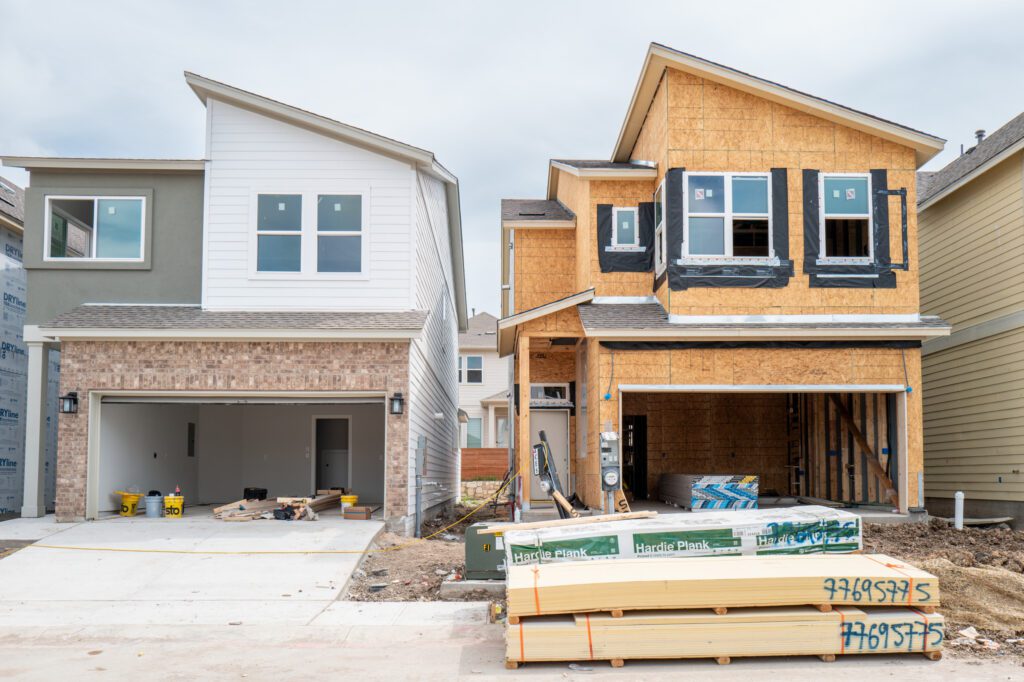U.S. New Home Demand Hits Lowest Point in Nearly Three Years Amid Rising Inventory and Builder Caution
The U.S. housing market is witnessing a significant shift as demand for new homes falls to its lowest level in almost three years. This downward trend signals a potential slowdown in residential construction nationwide, as builders contend with rising inventory levels and heightened buyer resistance due to increased prices and mortgage rates.
Sharp Decline in New Home Demand Signals Market Caution
Recent data illustrates a stark reality: “No one is buying new homes that are under construction or permitted,” stated Nick Gerli, CEO of Reventure App. The months of supply metric—a crucial indicator representing how long current listings would last given the current sales pace—has soared to between 15 and 20 months, the highest on record. For context, a balanced market typically features approximately six months of supply, underscoring the current excess inventory in new home segments.
Understanding Months of Supply: What It Means for Buyers and Builders
- Permitted, yet not started homes: Months of supply stands at a record-high 19.4 months, indicating buyers are hesitant to commit to homes still under development.
- Homes under construction: Supply amounts to 14.8 months, second only to levels seen in 2008.
- Completed homes: Present a tighter inventory with a supply of just 3.6 months, showing stronger movement in finished properties.
This imbalance is further highlighted by the volume of homes already under construction, currently at 268,000 units, reminiscent of the excess housing stock seen during the 2007-2008 housing crisis.
Rising Inventory and Slumping Sales: A Post-Recession Market Correction
After the 2007-2008 subprime mortgage crisis, the U.S. experienced a chronic underbuilding phase, causing a persistent housing shortage that sharply escalated prices during the pandemic’s homebuying surge. States such as Florida and Texas saw marked increases in construction projects in response to pandemic-era demand.
However, this trend has shifted. Housing inventory is now at its highest since late 2007, signaling a movement toward resolving the historic shortage. Nonetheless, this has been accompanied by a significant drop in sales:
- New home sales declined 13.7% in May 2025 from the previous month.
- Annualized sales rates fell to 623,000 units, marking the sharpest monthly drop since June 2022.
- Sales are down 6.3% compared to last year, reflecting ongoing market cooling.
Mortgage rates also remain a major factor. As of late June, the average 30-year fixed-rate mortgage hovered around 6.77%, nearly triple the pandemic lows, contributing to affordability challenges.
Builders Cautious as Market Sentiment Dips
The National Association of Home Builders (NAHB) reports that U.S. builder sentiment recently plunged to its lowest level since 2022. Pressured by increased construction costs—exacerbated by tariffs—as well as softened buyer demand, many builders are:
- Cutting prices or offering buyer incentives.
- Delaying or scaling back on new development projects.
Recent figures illustrate this hesitancy with a 9.8% drop in housing starts during May 2025, falling to an annualized 1.26 million units. Multifamily housing starts plunged nearly 30%, while single-family home construction saw a modest uptick to 924,000 units. Additionally, permits for new construction slid to a five-year low, marking a slowdown in the pipeline for future homes.
What This Means for the U.S. Housing Market Moving Forward
Industry experts project that the current conditions will likely persist, with new home construction continuing to plateau or decline amid:
- Elevated financing costs.
- Ongoing tariff-related material price pressures.
- Rising competition from increased existing-home inventory.
- Builders’ heightened inventory levels reducing urgency to start new projects.
Odeta Kushi, Deputy Chief Economist at First American, highlights the complex challenges facing builders: “Higher financing costs, tariff uncertainty, softer demand from elevated rates, and increased competition from existing homes are weighing on builder sentiment.”
Robert Dietz, NAHB’s Chief Economist, echoes this cautious outlook: “Builders will be pulling back on construction in the months ahead.”
Summary of Current U.S. Housing Landscape
- Demand for new homes has dropped to the lowest in nearly three years.
- Housing inventory at its highest level since 2007, easing the historic shortage.
- Mortgage rates near 7%, limiting buyer affordability.
- Builder sentiment at near-record lows with decreased housing starts and permits.
- Market is transitioning from a shortage-driven seller’s market to one with significant inventory surplus.
Additional Resources
As the U.S. housing market navigates these evolving dynamics, buyers and sellers alike face a period of adjustment. While inventory growth offers some relief after years of scarcity, challenges related to affordability and builder caution signal ongoing market complexities through 2025 and beyond.


